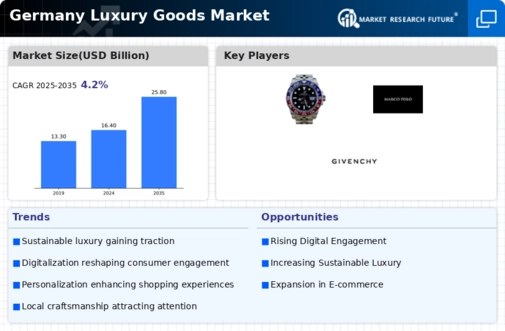Germany Luxury Goods Market Summary
The Germany Luxury Goods market is projected to grow from 16.4 billion USD in 2024 to 25.8 billion USD by 2035.
Key Market Trends & Highlights
Germany Luxury Goods Key Trends and Highlights
- The market is expected to achieve a compound annual growth rate of 4.2 percent from 2025 to 2035.
- In 2024, the market valuation stands at 16.4 billion USD, indicating a robust starting point for future growth.
- By 2035, the market is anticipated to reach 25.8 billion USD, reflecting a strong upward trajectory.
- Growing adoption of luxury brands due to increasing disposable income is a major market driver.
Market Size & Forecast
| 2024 Market Size | 16.39 (USD Billion) |
| 2035 Market Size | 25.78 (USD Billion) |
| CAGR (2025-2035) | 4.20% |
Major Players
LVMH Moet Hennessy, Chanel SA, Hermes International SA, Kering SA, Rolex SA, Marc O Polo Group, Prada SpA, Givenchy, L'Oreal SA, HUGO BOSS AG













